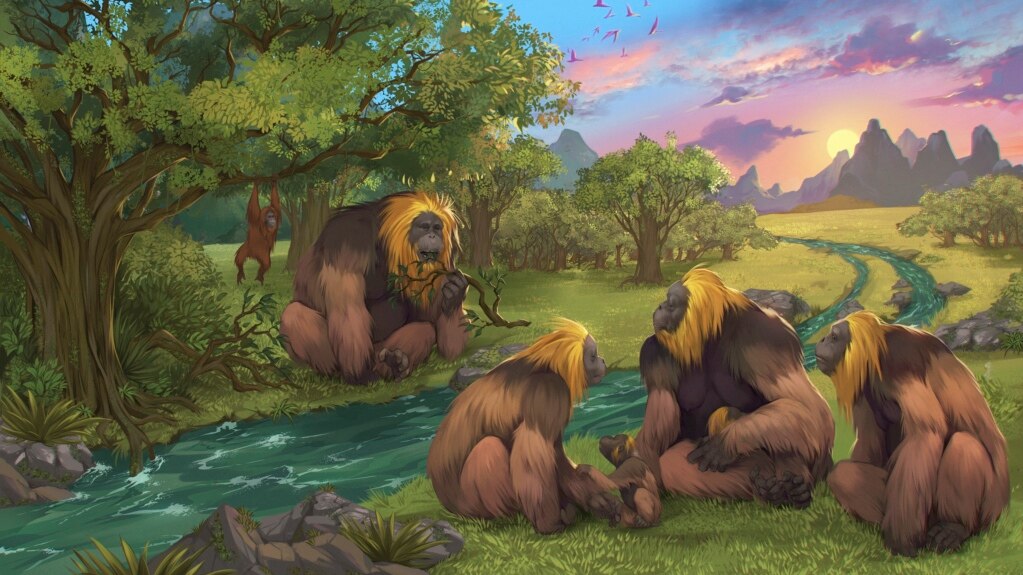An ancient species of great ape likely disappeared hundreds of thousands of years ago when climate change put their favorite fruits out of reach during dry seasons, scientists recently reported.
The species is known as Gigantopithecus blacki. It once lived in southern China. It stood 3 meters tall and weighed up to 295 kilograms. It represents the largest great ape known to scientists.
“It’s just a massive animal – just really, really big,” said Renaud Joannes-Boyau. He is a researcher at Australia’s Southern Cross University. He helped write the study, which recently appeared in the publication Nature.
But its size may also have been a weakness. Joannes-Boyau said, “When food starts to be scarce, it’s so big it can’t climb trees to explore new food sources.”
The huge apes likely looked similar to the modern orangutan. It survived for around 2 million years in the forested land of China’s Guangxi area. They ate plants that included fruits and flowers --- until the environment began to change.
Starting about 600,000 years ago, Guangxi’s forests began producing fewer fruits. The area was experiencing more periods of dry weather. Researchers examined pollen and sediment found in underground areas called caves to learn more about the changes and their effects.
The giant apes did not disappear quickly, the researchers say. They likely went extinct sometime between 215,000 and 295,000 years ago.
As the climate changed, smaller apes may have been able to climb trees to search for different food. But the researchers found that the giant apes ate more food that provided less nutrients. That less nutritious food included tree bark and thin grasses called reeds.
“When the forest changed, there was not enough food preferred by the species,” said Zhang Yingqi of China’s Institute of Vertebrate Paleontology and Paleoanthropology. He helped write the study.
Most of what scientists know about the extinct great apes comes from studying their remains, or fossils. The fossilized bones they studied included teeth and four large lower jaw bones. All of the fossils were found in southern China. No complete skeletons have been found.
Between around 2 million and 22 million years ago, many species of great apes lived in Africa, Europe, and Asia, fossil records show. Today, only gorillas, chimpanzees, bonobos, orangutans and humans remain.
I’m Gregory Stachel.

